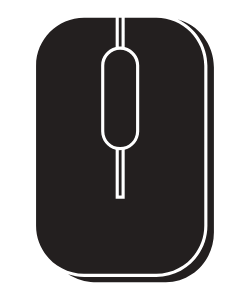
Urban areas around the globe are embracing the newest developments in modern technology by becoming smart cities. These cities integrate sensors and actuators and link them together to collect data. We were intrigued when we first learned about smart cities, so we began doing our own research to discover additional details and we wanted to share this information with others. When you read these articles you'll learn how smart city technology uses the data that's gathered to monitor energy usage in homes and buildings to analyze their energy efficiency. You'll also find out about smart transportation, which entails installing cameras in traffic lights to monitor the flow of traffic. We hope that when you read these and other articles on this site you'll gain a better understanding of smart city technology.
One way to gain a competitive edge over other businesses in your industry is by investing in NAICS consul
In today's fast-paced digital world, businesses rely heavily on technology to run their operations. From
The use of technology has become an integral part of running a business. It helps streamline day-to-day o
The function of heating, ventilation, and air conditioning (HVAC) in residential settings is vital. HVAC
Regardless of what type of company you're interested in starting, you'll need to set up a network for dev
The function of heating, ventilation, and air conditioning (HVAC) in residential settings is vital. HVAC systems guarantee comfortable and healthy air quality, irrespective of the weather conditions. However, the process behind these systems can be attributed to HVAC design. This blog post will examine the necessary stages involved in the design of residential HVAC.
Assessment of the Space
The first step in designing an HVAC system for a home is to assess the space. This involves taking into account the size of the home, the number of rooms, and how they're used. Additionally, the age of the home matters. Older homes often have different ventilation requirements than newer ones.
Heating and Cooling Load Calculation
The next step is to determine the HVAC load requirements. Load calculation is essential to determine the right system size for the home. This calculation considers various factors that impact heating and cooling requirements, such as insulation, window types and sizes, occupancy, and even home orientation.
Equipment Selection and Design
Once the calculations are made, it's time to select the equipment to provide heating and cooling for the home. This includes choosing the right type of systems, ductwork design, and other equipment that will be necessary. The design must take into account the unique needs of the home, such as the number of floors, layout, and location.
Installation and Testing
The installation is the most crucial part of the process. The correct installation ensures the system operates effectively and efficiently. The installation company should follow the manufacturer's instructions to ensure the system is installed properly. Additionally, the HVAC system must be tested to assess its performance, ensuring it meets the requirements of the design.
Maintenance and Upkeep
The final step in the residential HVAC design process is maintenance and upkeep. It's essential to ensure the system remains in optimal condition. Scheduled maintenance can help detect any issues before they become major problems. Regular upkeep and repairs also help the system perform at its peak.
A properly designed HVAC system can provide years of comfort and energy savings. A professional HVAC design and installation company can offer valuable guidance on selecting the best system for your needs. They'll assist you in every step of the process, from designing a system tailored for your home to regular maintenance to keep it functioning at optimal efficiency. Contact a qualified HVAC design and installation company to ensure your home is comfortable and healthy.
Share